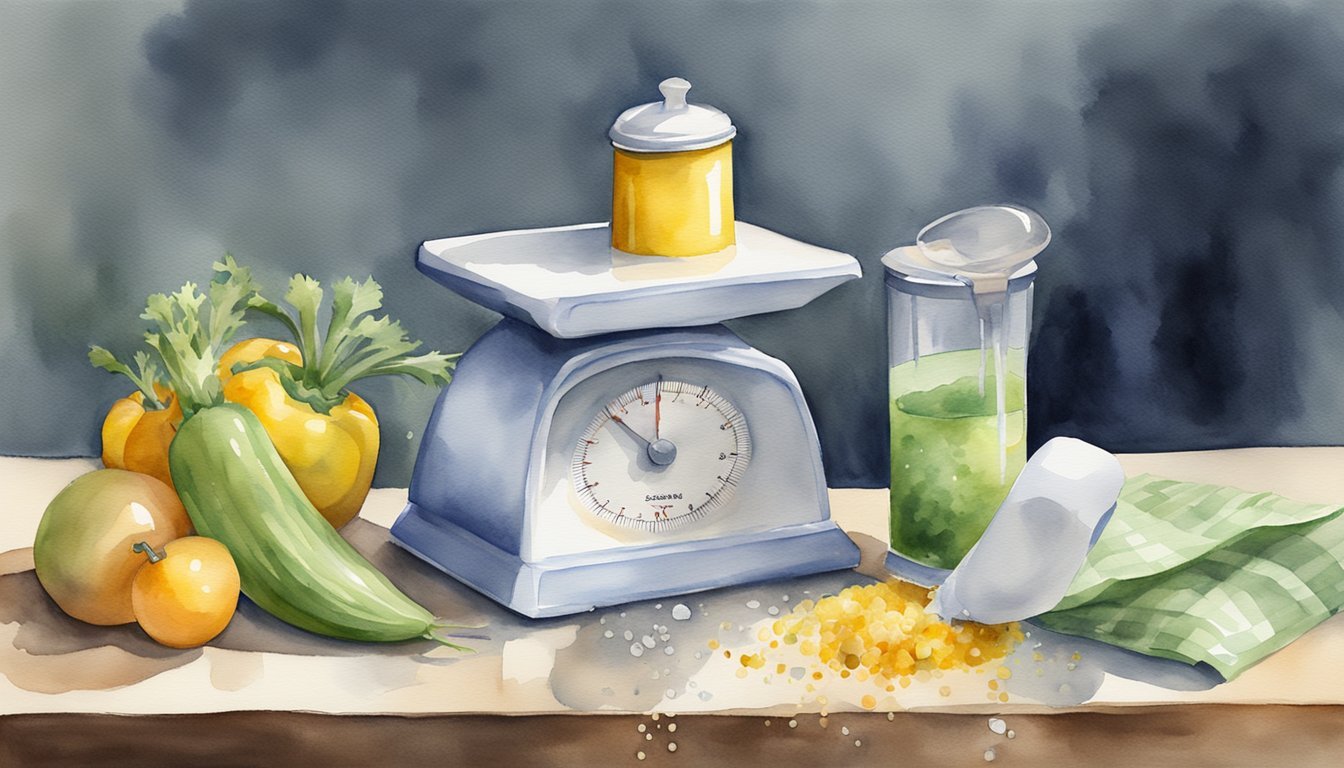Understanding Sodium and Weight Loss

Exploring the relationship between sodium and weight loss reveals the intricate balance our bodies maintain to support overall health. This section delves into the essential role of sodium in the body, its impact on weight management, and the recommended guidelines for sodium intake.
Role of Sodium in the Body
Sodium, a mineral that’s vital for maintaining fluid balance, is found in every cell of the body. It’s necessary for normal nerve and muscle function and works in conjunction with other electrolytes like potassium and chloride. The kidneys carefully regulate sodium levels to keep bodily fluids in balance, which is critical for supporting normal blood pressure and overall heart health.
Sodium’s Impact on Weight Management
Sodium indirectly affects weight management by influencing how the body retains water. High sodium intake often leads to water retention, making a person feel bloated, which can affect the scale briefly. Additionally, a diet high in sodium may increase thirst, leading to higher fluid consumption and potentially affecting body water stores. While sodium itself doesn’t cause fat gain, its effect on body water can influence one’s perceived weight.
Sodium Intake Guidelines
The American Heart Association recommends a maximum of 2,300 milligrams per day for adults, with an ideal limit of no more than 1,500 milligrams for most. Meanwhile, the Centers for Disease Control and Prevention acknowledge that the average American consumes much more than that, often exceeding 3,400 milligrams daily. A low-sodium diet is advisable for aiding in weight management and promoting heart health. Following detailed guidelines laid out by the World Health Organization can help individuals adjust their sodium intake to healthier levels.
Dietary Choices and Sodium Reduction
When focusing on weight loss and overall health, it’s crucial to understand the impact of sodium on diet. Excessive sodium consumption can lead to water retention, which may cause bloating and increase body weight. Reducing sodium can also play a role in preventing conditions such as hypertension and heart disease.
Identifying High-Sodium Foods
To reduce sodium intake, it’s important to pinpoint which foods are high in sodium. Processed foods, fast food, and processed meats like bacon and ham are significant sources of sodium. Additionally, condiments such as ketchup, soy sauce, and ready-made salad dressings can contain high levels of sodium. Even seemingly healthy options like bread and certain cereals can pack more sodium than one might expect.
Making Low-Sodium Choices
Embracing a diet rich in whole grains, fruits, and vegetables is a good strategy for making low-sodium choices. Fresh produce, in particular, contains minimal sodium and provides essential nutrients. Incorporating foods like avocado and spices in place of salt can enrich the flavor of meals without the need for added sodium. When possible, opt for fresh or frozen poultry and fish, and consider using herbs to season food.
Reading Food Labels for Sodium Content
Understanding food labels is crucial when trying to reduce sodium intake. The Nutrition Facts label provides information that can help individuals make informed choices. The U.S. Food and Drug Administration recommends looking for terms like “low sodium,” “reduced sodium,” and “sodium-free.” Be wary of hidden sodium in ingredients like monosodium glutamate (MSG), sodium bicarbonate (baking soda), and sodium nitrate, which are common in many packaged and processed foods.

